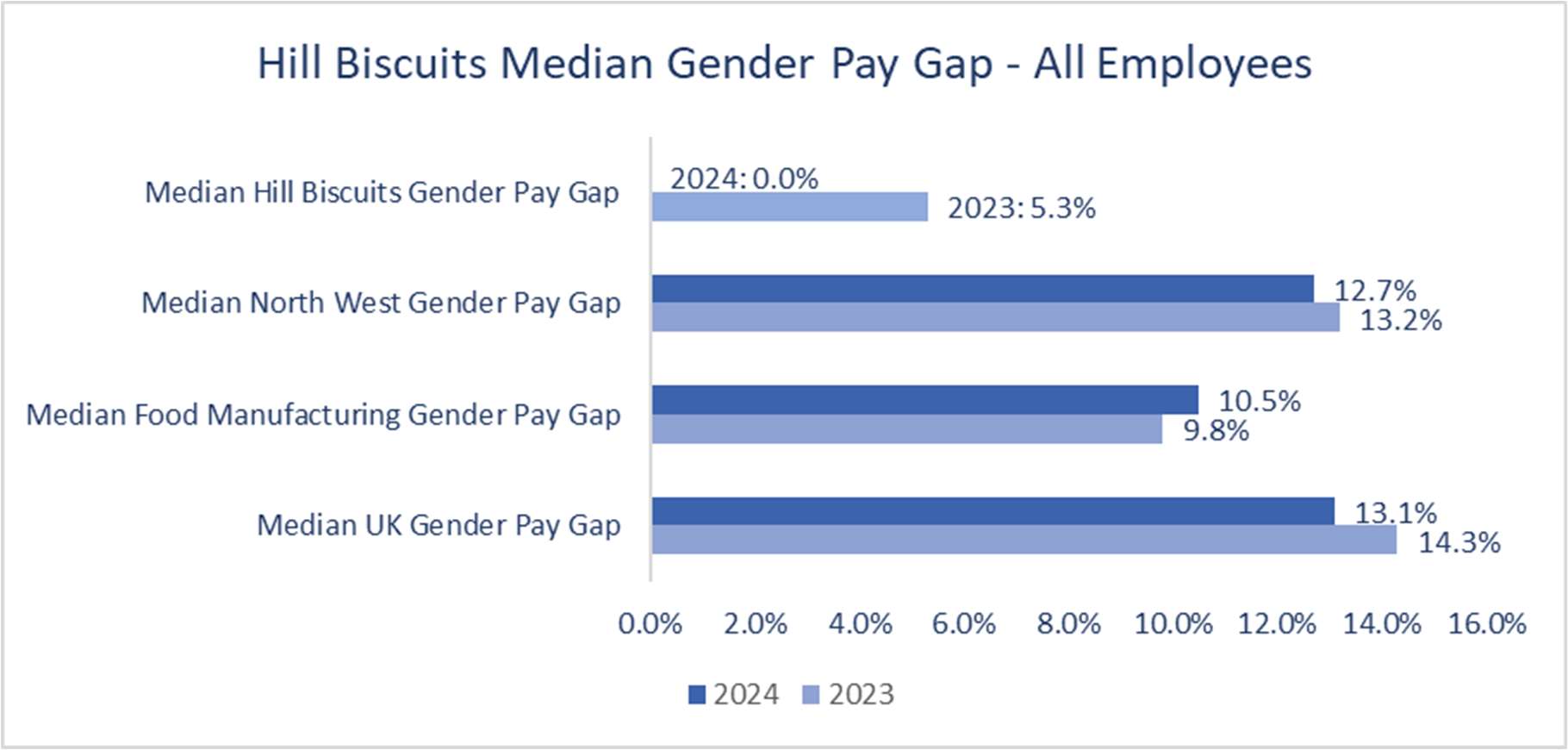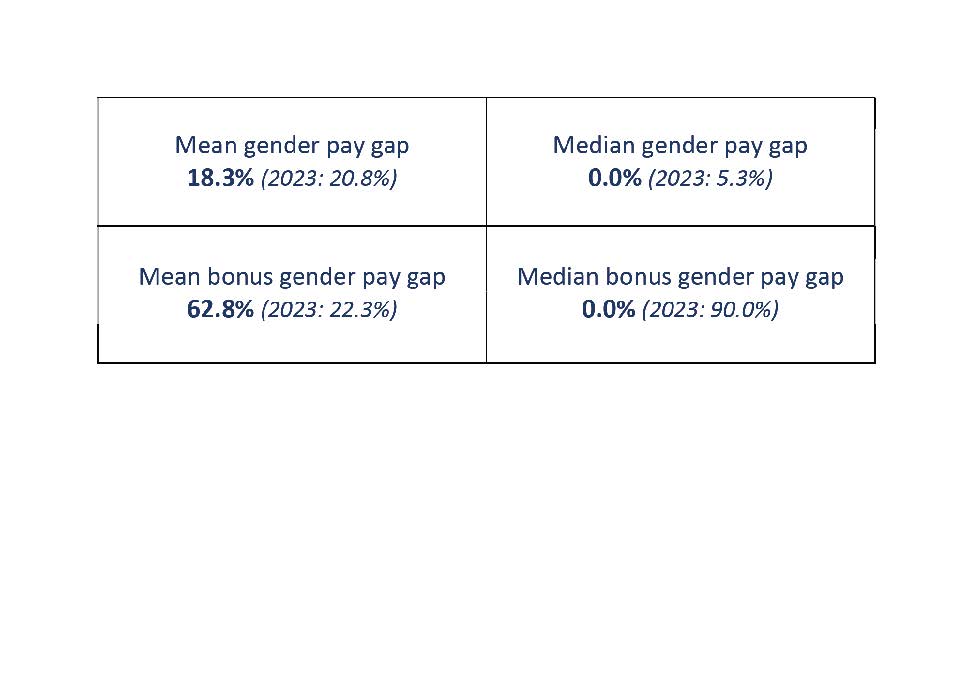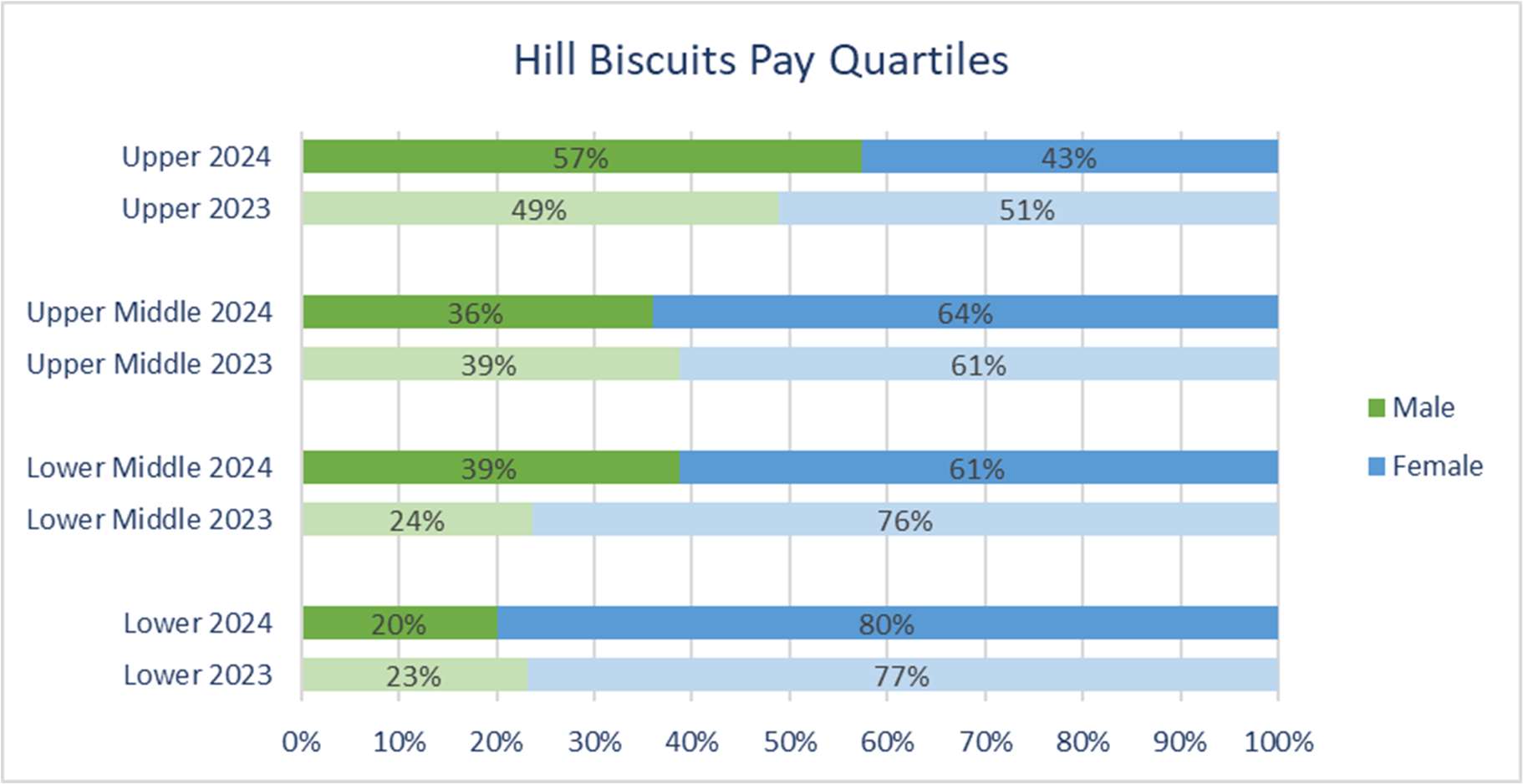It is important to firstly distinguish the difference between the gender pay gap and equal pay. Equal pay concerns the pay of male and female employees who carry out the same roles, or work of equal value. At Hill Biscuits, employees are paid equally for the same or similar jobs regardless of gender. The gender pay gap is a measure of the difference between the average pay for all female employees and the average pay for all male employees.
In our gender pay gap report for 2023 we reported an improvement in the median gender pay gap at Hill Biscuits, with the measure showing a continuing downward trend since 2018. This was also reflected in the gender profile of the pay quartiles, with the proportion of females in the upper middle quartiles increasing, whilst the proportion of females in the lower and lower middle quartiles had reduced.
This year, we are pleased to report a further improvement in the median gender pay gap, has reduced by 5.3% and is now at 0.0%.
Our trend of further of improvement to gender pay gap percentage is better than the averages for the North West, Food Manufacturing and the UK as shown in the above table.
The Mean and Median gender pay gap calculations including the bonus gender pay gap measures are provided below.
As part of the Gender Pay Gap reporting process, employers have been asked to split their workforce into four groups based on pay, and to show the proportion of male and female employees in each quartile as shown below.
The proportion of male and female employees receiving bonuses were: Male 7.6%, Female 4.2%. The mean bonus gender pay gap is 62.8%, and the median bonus gender pay gap stands at 0.0% for the period.
Having looked at our results in detail we have identified that the majority of the gap is as a result of having more men than women in senior management positions in the upper quartile. Albeit the above analysis demonstrates progress has been made in the Upper Middle quartile, we are keen to see an improvement in the upcoming year to the Upper and Lower Middle quartile percentages.
We expect any further reduction in the gender pay gap to be a gradual process as the average length of service of our employees2 is 7.2 years, with a range of 0 to 37 years. When we look at the management team in isolation, this becomes an average of 9 years, with a range up to 37 years.
We consider gender pay gap reporting to be a useful resource in highlighting why the gap exists and will endeavour to take further steps to reduce it. We remain committed to treating all employees fairly.
This report is based on data as at the snapshot date of 5 April 2024.
Brendon Ward-Banner
Chief Executive & Financial Officer



